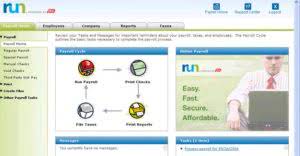
For example, if a company expects to have $500 in the cash register at the end of the day, but the actual amount counted is $510, then there is a cash overage of $10. On the other hand, if the company expects to have $500 in the cash register but the actual amount counted is $490, then there is a cash shortage of $10. Monitoring and reporting cash short and over can help detect and prevent future occurrences. Businesses can monitor cash handling procedures, Food Truck Accounting review audit reports, and investigate any discrepancies. Reporting cash short and over to management can also help identify areas for improvement.
- They can affect trust with stakeholders, lead to potential losses, and even expose a company to fraud.
- Cash over and short accounts are also used widely to balance the company’s accounting records when it replenishes its petty cash account.
- When a cash discrepancy arises, a thorough investigation is imperative to unearth the root cause and prevent recurrence.
- Then, subtract the expected cash on hand from the actual cash on hand to get the cash short or over amount.
- By identifying the reason for the shortage, businesses can take appropriate actions to prevent future occurrences and ensure the accuracy of their financial records.
- Role-playing scenarios and hands-on exercises can enhance the learning experience, making it more likely that employees will retain the information and apply it in real-world situations.
Cash overage in replenishment of petty cash

If there is a positive balance in the cash short and over account, it is crucial to investigate the reason for the overage. It could be due to an error in the cash count, an overpayment by a customer, or a mistake in the accounting records. By identifying the reason for the overage, businesses can take appropriate actions to prevent future occurrences. After calculating the cash short and over, it is essential to interpret the results accurately.
Cash over and short journal entry

For the past 52 years, Harold Averkamp (CPA, MBA) hasworked as an accounting supervisor, manager, consultant, university instructor, and innovator in teaching accounting online. For the past 52 years, Harold Averkamp (CPA, MBA) has worked as an accounting supervisor, manager, consultant, university instructor, and innovator in teaching accounting online. In order to clearly understand this cash over and short, let’s go through the examples below.

Cash Shortage Journal Entry Example

He finds that how to find cash over and short the box contains $45 of cash and $135 of receipts, which totals only $180. This cash shortfall is recorded as a debit to the cash over and short account (which is an expense) and a credit to the petty cash or cash account (which is an asset reduction). Regular audits and surprise cash counts also play a crucial role in maintaining the accuracy of cash management. These procedures help to verify that the reported cash levels are accurate and that internal controls are being followed. Audits, whether conducted internally or by external parties, provide an objective review of financial practices and can identify areas for improvement. Surprise cash counts add an additional layer of security by preventing employees from preparing for the count, which can help to uncover any discrepancies that might otherwise be concealed.
- He has been a manager and an auditor with Deloitte, a big 4 accountancy firm, and holds a degree from Loughborough University.
- In the realm of financial management, pinpointing and reconciling cash over and short is a nuanced process that begins with the meticulous tracking of daily transactions.
- By implementing these preventive measures, businesses can reduce the risk of cash short and over and ensure that cash handling procedures are accurate and efficient.
- This cash-over-short account should be classified as an income-statement account, not an expense account because the recorded errors can increase or decrease a company’s profits on its income statement.
- Opposite to the cash shortage, cash overage occurs when the cash we have on hand at the end of the day is more than the cash sales.
- A negative result represents a cash short amount, while a positive number represents a cash over amount.
Over and short—often called “cash over short”—is an accounting term that signals a discrepancy between a company’s reported figures (from its sales records or receipts) and its audited figures. The term also is the name of an account in a company’s QuickBooks general ledger—the cash-over-short account. Once a discrepancy is detected, the next step is to reconcile the difference. This task typically falls to accounting personnel who must scrutinize transaction records, including sales receipts, refund documentation, and deposit records.

This difference can occur due to various reasons such as errors in recording transactions, theft, or mismanagement of funds. Cash overages are normally recorded in a separate income statement expense account often referred to as the cash over/short account. The cash over and short account is the type of miscellaneous account in the income statement.
